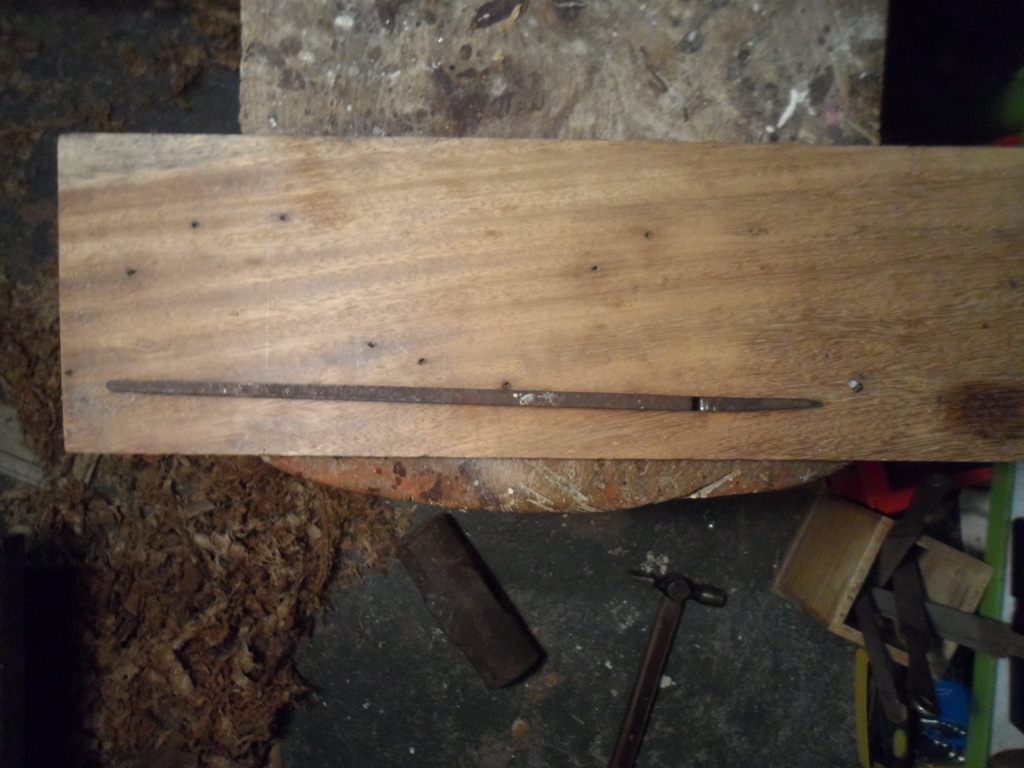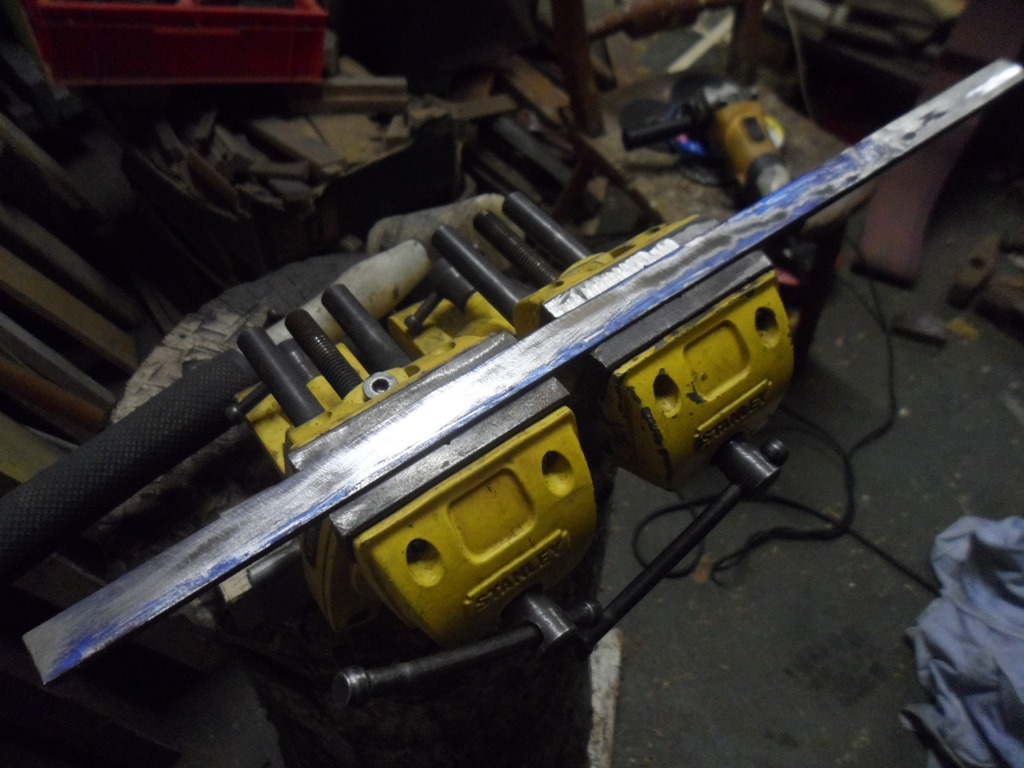Ttrees
Iroko loco!
Hello folks
I've been getting fed up working bevel down in awkward spots, whilst cleaning out old mortises on reclaimed door stiles.
Enough to make me want to scracifice an nice old file for the greater good.
Might have a mooch around for another file in the folks, will need grinding discs anyways, but there's a good chance this one might be the donor.
I have a question about the bent tang.
Can I just hammer it back flat again without heating?
Thanks folks
I've been getting fed up working bevel down in awkward spots, whilst cleaning out old mortises on reclaimed door stiles.
Enough to make me want to scracifice an nice old file for the greater good.
Might have a mooch around for another file in the folks, will need grinding discs anyways, but there's a good chance this one might be the donor.
I have a question about the bent tang.
Can I just hammer it back flat again without heating?
Thanks folks









































































